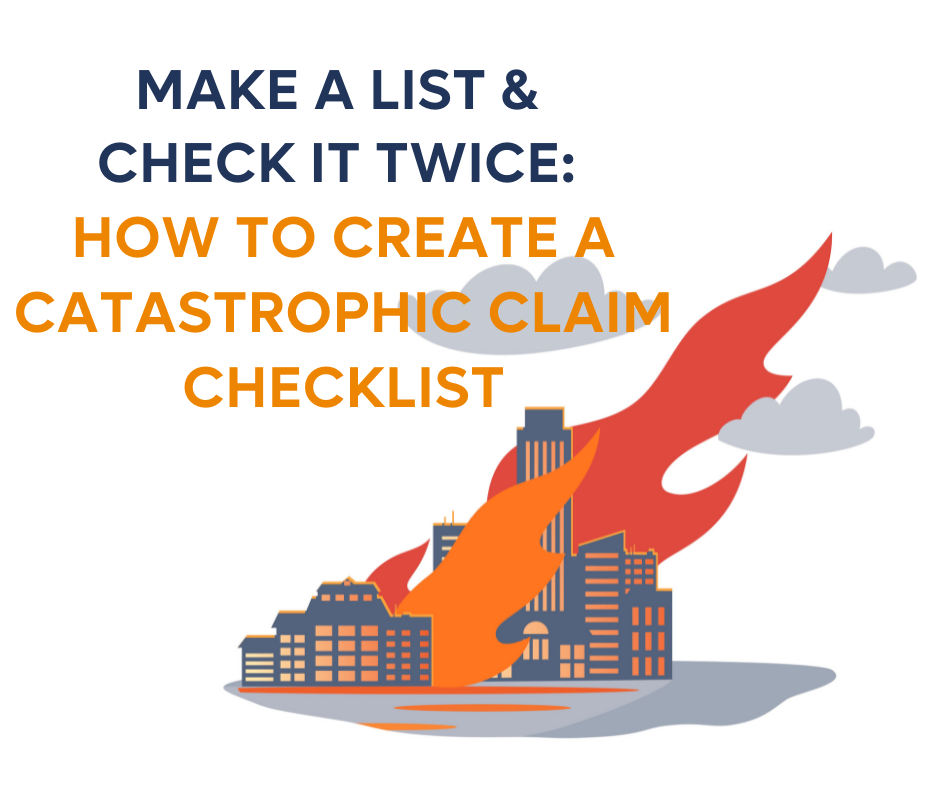
How to Create a Catastrophic Claim Checklist
If a catastrophic claim occurs, do you have a checklist for the handling of the claim?
By Nan Dillon
Even if your organization’s claims history is limited to minor soft tissue injuries, developing a Catastrophic Claim Checklist places you in the best position to respond quickly and efficiently to the needs of injured workers and their families. Preparing now will allow your team an opportunity to identify internal and external resources so that your organization’s Texas Option plan can seamlessly provide valuable support to your injured worker at the onset of the event.
When developing a checklist for catastrophic claims, PartnerSource recommends including answers to questions like these:
- Who should receive immediate notice of the event?
- What information is needed to assist with the handling of the claim?
- How can we best advocate for the injured worker?
Who should receive immediate notice of the event?
The first step is to develop a crisis team comprised of key individuals who are readily available when a catastrophic event occurs. These individuals should be accessible 24/7, and should include representatives from different departments within your organization that will be engaged in the handling of the catastrophic claim event. Representatives from risk management, legal and human resources will be key members of the team. In addition to a designated crisis team, immediate notice should be provided to your organization’s experienced safety personnel for the purpose of gathering facts surrounding the event. While your organization’s safety team is at work, the crisis team can partner with key decision makers within your organization, along with corporate representatives, in order to make them aware of any new developments surrounding the event.
At the top of the checklist should be to provide immediate notice to the third party administrator so that the adjuster can promptly conduct their investigation and review the injury benefit plan to confirm the levels of benefit coverage. In most instances, it is a best practice to engage a medical management vendor and assign a field case manager (FCM) to help gather information from the medical providers and assist with the coordination of medical treatment while the investigation is underway. The FCM can also act as a medical advocate for the injured worker and/or the worker’s family during this difficult time.
Also, identify on the checklist who shall be responsible for providing notice to OSHA and the insurance carrier of the incident. This is extremely important in order to prevent any issues related to late reporting of the claim.
What information is needed to assist with the handling of the claim?
Confirming the circumstances of the accident and gathering supporting documentation and evidence must be done immediately. A copy of the injured worker’s personnel file can be helpful to determine if there are other benefits available to the injured worker while the claim facts are being gathered. In addition, if the event results in a fatality, the personnel file may contain information or record of a beneficiary for voluntary or company-provided accidental death and dismemberment benefits separate and apart from the injury benefit plan. Also, you may consider assigning a third party to perform an onsite inspection and capture details of the event. In addition, this individual can investigate any potential for subrogation. If law enforcement is involved, copies of witness statements, police reports and autopsy reports can be acquired by the third party.
How can we best advocate for the injured worker?
Catastrophic events are difficult for all parties involved, especially the injured worker and their family. It is always best to send a company representative to meet with the family for the sole purpose of providing guidance and expressing compassion during this challenging time. If the catastrophic event resulted in extensive, severe bodily injury and long-term medical treatment is expected, the family may feel overwhelmed and lost. The corporate representative can facilitate introductions of the FCM and the claims adjuster to the family and explain the roles of the vendor partners involved in the case. That way, they are aware of all partners engaged to assist with the handling of their loved one’s benefit claim. If the event resulted in a fatality, the family may have questions and limited resources available to them. This designated point of contact from your organization can be their lifeline. This individual will act as their advocate by providing the injured worker’s family assistance by coordinating benefits that are available under the injury benefit plan or other forms of coverage provided by your organization.
When considering the three questions listed above, you are proactively identifying ways to care for your most valuable asset – your employees. If you have questions about how to develop or implement a plan for handling catastrophic claims, please contact your PartnerSource team leader or director. Together, we can develop a plan for gathering information, analyzing coverage and identifying ways to best advocate for the injured worker and/or the worker’s family.
